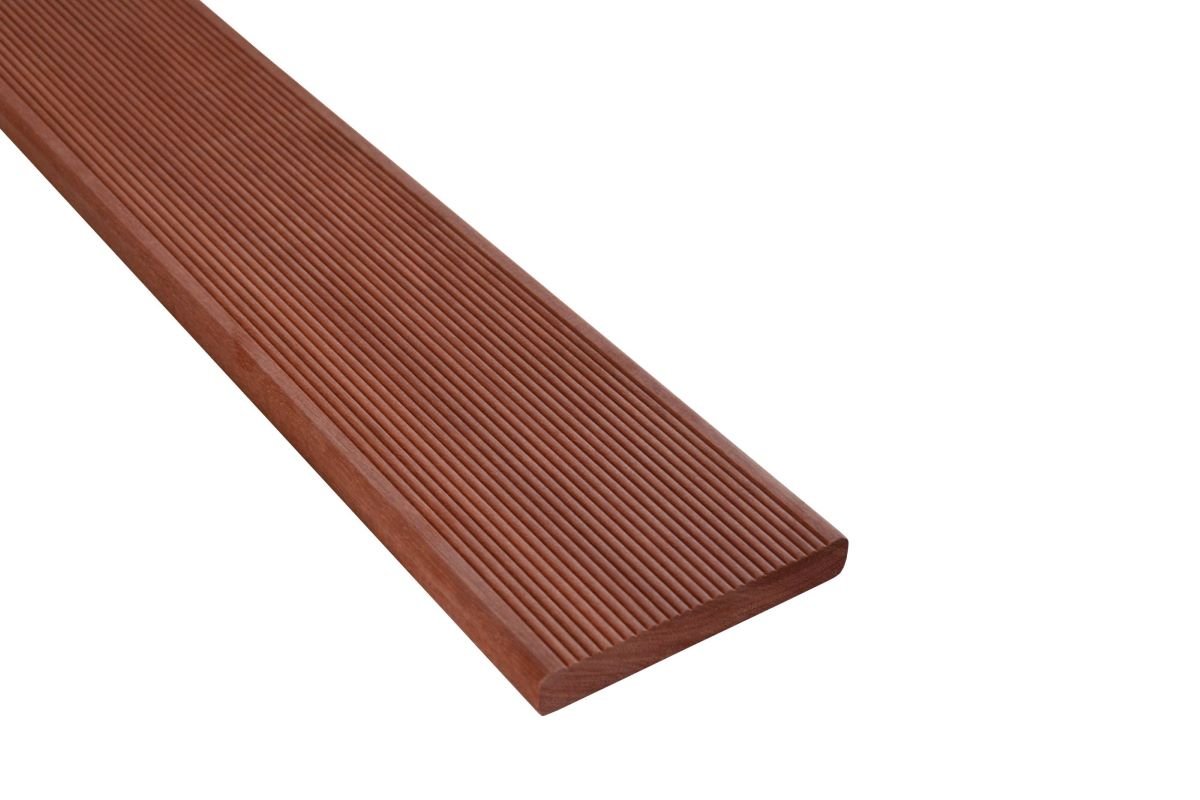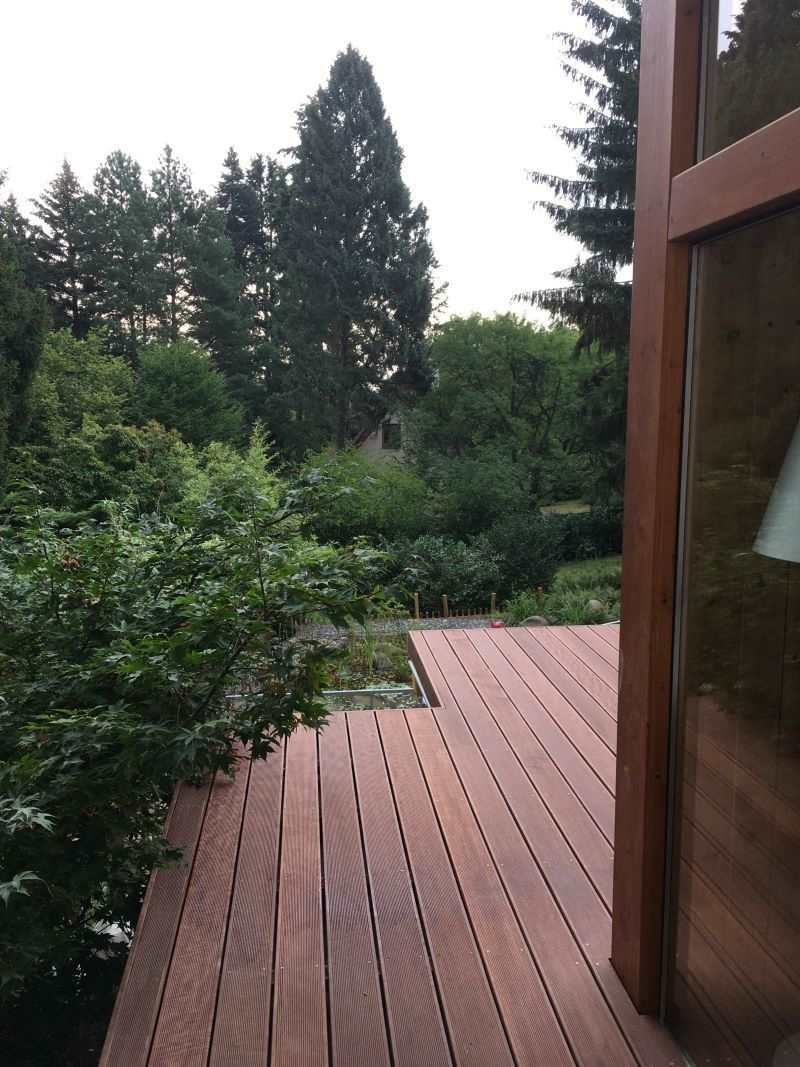| Dimensions | 21 x 145, 25 x 145 mm |
| Profile | Reeded / Smooth, Reeded / Grooved |
| Grade | FAS |
| Origin | Brazil |
| Wood density | approx. 1100kg/m3 |
| Kiln dry | 18 - 22% |


25x145 mm Reeded/Grooved

21x145 mm Reeded/Smooth

Massaranduba is a tropical wood commonly used for exterior decking. The extremely fine, evenly textured wood has a purple-red brown color with varying shades. Color variations between boards are natural and common.
Massaranduba is similar to Ipe hardwood in many ways and is often used interchangeably with ipe. Massaranduba is one of the hardest woods in the world, which gives it incredible durability and longevity. It is also naturally resistant to insect attack, mold, rot, fire and decay. Due to the fine texture of the wood, Massarandba decking provides excellent slip resistance.
Massaranduba is one of the most popular woods for decking and is generally considered to be solid and hard. The kiln drying process makes the wood more dimensionally stable, resulting in durable Massaranduba decking.

We recommend treating Massaranduba wood terraces with wax on all cutting sides before installation - Osmo Wax for cutting edges No. 5735. If you decide to finish the Massaranduba decking, then it is possible after approx. Three months after exposing the terrace to direct weathering.
If you choose not to finish the deck's surface, a gray patina will be created. Graying occurs due to sunlight and water. The essential component of radiation that affects the graying of wood is UV radiation. Wood molecules absorb this radiation. Due to radiation and water, gray patina forms on the surface and into the wood's depths. This gray patina will eventually become natural protection against further exposure to UV radiation.
Wood is a hygroscopic material, and for this reason, it changes its shape depending on air humidity. Depending on air humidity and ambient temperature, this humidity change process is reversible but does not occur on the same plane. For the same relative humidity and air temperature, the wood's moisture is higher during desorption than during absorption, with a range of relative humidity RH 30% - 90% by 2.5% to 3.5%. It means that the wood reduces its volume during drying and does not return to its original dimension when moisture is taken back. This fact has a fundamental influence on the behavior of the Massaranduba terrace in Kiln dry state.